Research Article Open Access
Comparison of Biological Activity Transistion Metal 12 Hydroxy oleate on Photodegradation of Plastics
| Anniyyappa Umapathi Santhoskumar, Komaragounder Palanivelu*, Shailendra Kumar Sharma and Sanjay Kumar Nayak | |
| Department of Plastics Technology, Central Institute of Plastics Engineering & Technology, Guindy, Chennai 600 032, India | |
| Corresponding Author : | K.Palanivelu Department of Plastics Engineering & Technology TVK Industrial Estate, Guindy Chennai–600 032, India Tel: +919677123881, +914422254708 Fax: +914422251707 E-mail: kpalanivelucipet@gmail.com, santhosannauniv@gmail.com |
| Received: September 01, 2010; Accepted: October 30, 2010; Published: November 02, 2010 | |
| Citation: Santhoskumar AU, Palanivelu K, Sharma SK, Nayak SK (2010) Comparison of Biological Activity Transistion Metal 12 Hydroxy oleate on Photodegradation of Plastics. J Bioremed Biodegrad 1:109. doi:10.4172/2155-6199.1000109 | |
| Copyright: © 2010 Santhoskumar AU, et al. This is an open-access article distributed under the terms of the Creative Commons Attribution License, which permits unrestricted use, distribution and reproduction in any medium, provided the original author and source are credited. | |
Related article at Pubmed Pubmed  Scholar Google Scholar Google |
|
Visit for more related articles at Journal of Bioremediation & Biodegradation
Abstract
The influence of low-molecular organic compounds such as Ferrous(Fe)12-hydroxyoleate and Nickel(Ni) 12-hydroxyloleate additives on photo transformation of polypropylene (PP) has been investigated. The tensile strength, infrared, optical properties and SEM has been used in these studies. The results indicate that additives applied accelerate and increase the efficiency of photodegradation in polypropylene but the hamper the photocrosslinking and formation of the carbonyl group following of the Norrish type-I in this polymer. In this case Ferrous 12-hydroxyl oleate showed greater activity as photo initiator comparing to Nickel 12-hydroxy oleate.
| Keywords |
| Photodegradation; Ferrous12-hydroxy oleate; Nickel 12-hydroxyl oleate; Polypropylene |
| Introduction |
| Transition metal element, some crude oil act as antioxidant and bioactive components are initiators of polymer degradation occurring in organic compounds [1-11]. They absorb a light up to above 290 nm, which cause their excitation or cleavage into free radicals. These ones may intitate polymer degradation and other transformations by abstraction of hydrogen atom from a macromolecule (pH) and formation of polymer alky radical (P°) [12-14]. |
| Transition metals like, Mn, Fe, Co Ni and Cu especially in the form of Fe 12-hydroxyl oleate and Ni-12 hydroxyl oleate have been employed to initiate degradation in polyethylene films. The role of these metals/metallic compounds on the photo-degradation of polyethylene has been extensively studied by several authors [15]. However, the effect of chain length of Fe12-hydroxyloleate and Ni12- hydroxy oleate on the rate of photo-oxidative degradation. |
| Control of the lifetime of polyololefin plastic comes with control oxidation and rate at which it occur subsesequently. Antioxidant, UV stabilizer and other protective additive in the past been developed to improve the long term durability of polyolfines, particularly in the outdoor environment. Today the understanding the basic science of oxidative degradation permits the use these same additives in additives in combination with prodegradant oxidized metal ions in polyolefin in application for which short but controlled retain its useful properties through one or more variety of fabrication procedures. The polymer with additives by melt blending and extrusion to form the final product-film, bag, container etc. |
| Experiment |
| Material and methods |
| Ammonium iron (II) sulphate hexahydrate and Ammonium Nickel (II) sulphate hexahydrate , sodium hydroxide, Ricinoleic acid were used without further purification. General purpose film grade PP H034SG has been used to prepare films. Milli Q ultrapure water was used throughout the course of this work. |
| Synthesis of ferrous and nickel 12 hydroxyl oleate |
| Fe12-hydroxyl oleate and Ni 12-hydroxy oleate were synthesized by the reaction of Ammonium iron (II) sulphate hexahydrate and Ammonium Nickel (II) sulphate hexahydrate with sodium 12-hydroxy oleate according to the procedure reported in the literature [16]. |
| Blending and film preparation of PP |
| The Fe12-hydroxyl oleate or Ni12-hydroxy oleate was melt blended with PP at three different formulations 1, 2 & 3% respectively in (Haake, Rheomex OS, PTW16, Thermo scientific, Germany) Modular Torque Rheometer. In this instrument condition as given below. |
| Speed range : 0 to 550 min-1 |
| Temp. Range : 0 to 440°C |
| Pressur Display Range : 0 to 700 Bar |
| Torque Measuring Range : 0 to 400 Nm |
| The Modular Torque Rheometer blending was carried out at temperature range of 210,200,190,180 and 150°C (from die to hopper) & a screw speed of 100 rpm. Subsequently, the pellets are dried in a dehumidifier at 70°C for two hours to remove moisture. The pellets produced were subsequently dried &subjected to film cast process to produce films of 50 µ thicknesses. |
| Photo degradation |
| All blended samples were subjected to photodegradation studies using QUV UV Weather-o-meter. Films of 25mm width were used to evaluate the degradation phenomenon. Samples were exposed to two different test cycles of UV irradiation and condensation as shown in Table 1. Subsequently the samples were tested and characterized for 1,2,3,4,5 and 6th day. For 24 hours for eight hous UV cycle was carried out and for next four hours condensation cycle was carried. For the remaining 12 h, the cycle was repeated in the same order. Photodegradation affect the physical and optical properties of a plastic relative to the initial specified properties. |
| Mechanism of photo degradation |
| Polypropylene was blended with the synthesized Fe or Ni 12-hydroxyoleate additive the photodegradation mechanism both metal 12-hydroxyl oleate in presence of double bond acting plasticizing effect to virgin polymer so the glass transition temperature reduced, OH functional group as compatibilizer, long alkyl group and pendent group for compatibility during processing, metal and carbonyl group for combined effect of photo activator in virgin polymer. In this case additive contain hydroxyl group, carbonyl group and double bond acting various functionalized compatabilizing agent, photoactivator and plastizing effect respectively. This may known as Multifunctional Additive as shown in Figure 1. |
| 12-hydroxyl oleate reacted within virgin polymer during UV weathering condition M2+ to M3+ when exposed to UV radiation. This could be due to the fact that in the photolysis process of Metal12-hydroxyl oleate, the M2+ ions Oxidizes to M 3+ more readily and these ions causes photo degradation of the polymer chains to form carbonyl groups following of the Norrish type-I reaction. As shown in generally structure and Mechanism Figures 2, 3, 4, 5 and 6. |
| Mechanical properties |
| Tensile properties (ASTM D 882): Tensile properties of virgin PP with Fe 12-hydroxy oleate and Ni 12-hydroxy oleate blended sample before and after UV exposure, with dimensions 150 x 25 x 0.060 mm were subjected to tensile tests as per ASTM D 882, using Universal Testing Machine (UTM), Lloyd Instrument Ltd, UK. A cross head speed of 500mm/min and gauge length of 50mm in both machine and transverse directions. |
| Thermal properties |
| Differential Scanning Calorimeter (DSC) analysis: Melting behavior of Fe and Ni12-hydroxyl oleate blended samples is being studied by employing Perkin Elmer (USA) differential scanning calorimeter. Sample 5 mg weight were scanned from 45 to 200°C at the heating rate of 5°C/min to detect the melting characteristics of the sample before and after exposure to UV radiation. The percentage of crystallinity of transistion metal 12-hydroxyl oleate blended PP films was calculated as follows. |
| % of Crytallinity = (ΔHm-ΔHc)/ ΔHco |
| Where ΔHm- Enthalpy of melting (J/g) |
| ΔHc- Enthalpy of Crystallization (J/g) |
| ΔHco - Enthalpy of 100 % crystalline polymer (277.3 J/g) |
| Thermo gravimetric analysis: TGA examines the process of weight changes as a function of temperature and time, rate of decomposition, thermal and oxidative stability of the PP blends. Samples=10 mg weight were heated from 50 to 700°C at the heating rate of 10°C/min to detect the characteristics of Fe and Ni-12 hydroxyl oleate blended PP films before and after UV exposure. |
| Optical properties |
| Optical properties such as luminous transmittance and haze were studied for the Fe 12-hydroxyl oleate and Ni12-hydroxyl oleate blended samples (PP) before UV and after UV exposure to find the effect of additive on the optical characteristics of the film. For measuring haze and luminous transmittance, The BYK Gardner Spectrophotometer was employed (ASTM D 1003). |
| Fourier Transform Infrared Spectroscopy (FTIR) |
| The structural changes in PP films due to the presence of Fe 12-hydroxy oleate and Ni 12-hydroxyl oleate effect of UV exposure were studied by Nicolet 6000 (USA) Fourier Transform Infrared Spectroscopy (FTIR) with the wave number range of 400-4000 cm-1. |
| Scanning electron morphology |
| The scanning electron microscopy analysis of fractured surface of PP-Fe 12-hydroxy oleate, PP-Ni 12-hydroxy oleate film was carried out using CARL ZESIS Model; EVO MA 15 scanning electron microscope. The surface of the samples was coated with conductive heavy metal such as gold / palladium. |
| Results and Discussion |
| Fourier Transform Infrared Spectroscopy (FTIR) |
| Characterization of Ferrous and Nickel l 12 hydroxy oleate: In Table 2 and in figure 7 the FTIR spectra of all the Fe and Ni 12-hydroxyl oleate exhibited absorbance at 1592 cm-1 due to asymmetric vibration stretching of the carboxylic group coordinated to the metal ion. The UV-Vis spectra of the oleate in ethanol show absorption maximum at 290- 360 nm as Fe and 290-305 nm as Ni 12-hydroxyl oleate. |
| Photo-oxidation of PP films containing Ferrous and Nickel 12 hydroxyl oleate: With an aim to investigate the chemical changes taking place in the polypropylene films due to photo-oxidation, the evolution of the FTIR Spectra was studied with respect to exposure time, similar changes in the FTIR spectra were observed in all the samples, the extent of change depends on the concentration and nature of oleate. Some new features that show increased intensity with UV exposure. As observed by other workers, a new (structured) band appears at -1712 cm-1 which can be attributed to the generation of carbonyl groups primarily on the surface of the polymer. |
| The increases in the absorbance of these bands was however more pronounced for samples containing Fe and Ni 12-hydroxy oleate than neat PP. as far as the band shape is concerned, a progressive broadening of the carbonyl band was observed. The carbonyl band is a results of overlapping of absorption bands due to several functional groups like ketones,carboxylic acids, aldehydes, esters and peroxylcarbolylic acids,etc. the broadening [17,18]. |
| The characteristic peak absorptions of virgin PP film and transition metal 12-hydroxy oleate are given in Table 2 and Table 3 respectively. The FTIR spectra of transition metal and PP Figure 7. PP with different percentage of oleate additive are given in figure 8a and figure 8b. |
| As shown in figure 9a & figure 9b a peak at around 1712 cm-1 corresponding to carbonyl group of transition metal 12-hydroxyl oleate was observed for PP films with 1%, 2% and 3% additive. It can be seen from the figure that the absorption intensity increases with increasing the concentration of the additive from 1% to 3%. On exposure of the films to the accelerated UV radiation further increases the intensity which is due to the formation of new carbonyl groups on photo degradation involving the chain scission following the Norrish type-I reaction. |
| Mechanical properties evaluation |
| The tensile strength data of PP film with iron (Fe) and nickel (Ni) 12-hydroxy oleate before and after UV exposure are presented in the Table 4 and table 5. |
| The tensile strength of PP virgin sample decreases with the incorporation of Fe 12-hydroxyl oleate as well as Ni 12-hydroxyl oleate in the concentration of 1%, 2% and 3%. There was a considerable decrease in the tensile strength and elongation at break on exposure of the films with additive to UV radiation. Both iron based as well as nickel based additives show considerable decrease in the tensile strength and elongation at break. The deterioration in mechanical properties of films was observed in both the machine direction and transverse direction, but the rate of deterioration was high in transverse direction. Also, increasing the concentration of additive from 1% to 3% increases the degradation. |
| In the case of PP films with Fe 12-hydroxy oleate additive show decrease in tensile strength and elongation and ultimately become brittle when exposed to UV radiation for 24 hrs (one day). Whereas the films with Ni 12- hydroxyl oleate additive show decrease in tensile properties and become brittle only after three day when exposed to UV radiation. This could be due to the fact that in the photolysis process of Fe 12-hydroxy oleate , the Fe2+ ions oxidizes to Fe3+ more readily and these ions causes photo degradation of the polymer chains to form carbonyl groups following the Norrish type-I reactions. In other words PP films containing Fe and Ni 12-hydroxy oleate exhibits a rapid loss in mechanical properties within 24 hours and 72 hours respectively. In absorption of energy in the form of light, the Fe and Ni 12-hydroxy oleate undergo decarboxylation leading to the formation of the free radicals. These generate radicals on the main chain of the polymer matrix leading to chain scission which finally affects the mechanical properties. This phenomenon is relatively slower in case of PP films not containing additive, where UV irradiation leads to crosslinking and hence higher tensile strength [19]. |
| Thermal properties |
| Thermo gravimetric analysis (TGA): The thermo gravimetric analysis of PP with Fe 12-hydroxyl oleate and PP with Ni 12-hydroxy oleate additive is summarized in Table 6 and Table 7. The results show that the initial decomposition temperature of PP after blending with Fe12-hydroxy oleate decreases significantly. The increase in percentage of additive further decreases the initial decomposition temperature. In fact about 15°C decrease in initial decomposition temperature was observed with 3% additive concentration in presence of one day UV exposure. This is because of the initiation of degradation due to the presence of metal ions. The degradation due to UV exposure involves the chain scission and formation of carbonyl groups following of the Norrish type-I reaction. However, there is a significant increase in ultimate decomposition temperature with increasing the concentration of Fe12 hydroxyl oleate in PP films. It was observed that about 38°C increase in ultimate decomposition temperature for PP films with 3% additive. This could be due to the formation more stable metal complexes on addition of Fe 12-hydroxy oleate. In same as PP with Ni 12-hydroxyloleate 48°C decrease in initial decomposition temperature was observed with 3% additive concentration in presence of two day UV exposure and increasing in ultimate decomposition temperature with increasing the concentration of Ni 12-hydyoxy oleate in PP films. It was observed that about 49°C. These results are in agreement with the mechanical properties data thus revealing higher degradation rate at higher additive percentage. |
| Differential Scanning Calorimeter (DSC): The differential scanning calorimetric data pertaining to the melting point and degree of crystallinity of Fe 12 hydroxy oleate and Ni12-hydroxy oleate blended PP film before and after exposure to accelerated UV is presented in Table 8 and 9 and Figure 10a and 10b. |
| The virgin PP shows its melting point at 165.30°C. On the incorporation of Fe12-hydroxy oleate and Ni 12-hydroxyl oleate, the melting point is found to change slightly due to the presence of additive in PP matrix. In case of the PP- Fe 12 hydroxy oleate samples exposed to UV for one day a marginal decrease in the melting point from 164.11 to 154.94°C was observed whereas in the case of Ni12- hydroxy oleate samples exposed to UV a marginal decrease in the melting point from 164.87 to 154.94°C was observed only after three days. This could be due to the faster photo degradation of PP films in the presence of Fe12-hydroxy oleate additive. Corresponding ΔH peak get broadening indicates the formation of low molecular weight species due to photo degradation. The Percentage of Crystalline decreases by increasing the additive concentration. It was observed that the degree of crystallinity of PP films with 3 % Fe12-hydroxy oleate decreases from 100 to 68 when the samples were exposed to UV for one day. These results are in agreement with the mechanical properties data thus revealing higher degradation rate at higher additive percentage. |
| Optical properties |
| The results of optical properties of Fe 12-hydroxyl oleate and Ni12-hydroxy oleate blended PP before and after exposure to UV radiation are given in Table10 and Figures 11, 12a and 12b. |
| It is evident that with the increase in additive concentration there was a decrease in transmittance level, which is due to the carbonyl formation in the process of photo oxidative degradation of PP film. In case of the films containing 3% additive possess low transmittance and high haze. As the UV exposure time increases the % haze and luminous transmittance decreases which could be due to the faster rate of degradation. |
| Morphology |
| Scanning electron micrograph: A comparative compilation of scanning electron micrographs of two samples (PP-Fe 12-hydroxyl oleate and PP- Ni 12-hydroxyl oleate) at magnification of 500 to 2000. Figure 13 as is apparent from the surface of nondegraded PP is smooth, without fractured and free from defects. Figure 14a and 14b, the SEM micrographs of PP- Fe 12-hydroxyl and PP- Ni12-hydroxyl blended films with 3% of additives show the uniform dispersion of additive in the polymer matrix. Figures 15, 16 and 17(a) shows the SEM of PP after 24 hours of UV degradation. It was observed that the surface developed some fractured and grooves due to UV exposure. However the extent of damage was much more pronounced in the samples containing Fe 12-hydroxyl oleate. |
| Figures 15, 16 and 17(b) shows the electron micrographs of Ni 12-hydroxyl oleate before and after UV exposure. The damage is more evident in this case and sample after 72 hours showed extensive grooves and pits as a result of UV irradiation. A1000 fold magnification SEM photograph of Ni12-hydroxyloleate after 72 hours of UV exposure is displayed in figure 17(b). Where the deepening of the pit is more evident. |
| Conclusion |
| The rate of photodegradation of PP film is very high at higher concentration of Fe and Ni 12-hydroxyl oleate. PP films containing 5% Fe 12-hydroxyl oleate has shown highest degradation in mechanical, thermal properties and reduction in degree of crystallinity compare than Ni-12 hydroxyl oleate on UV exposure. In the FTIR analysis shows that a peak at around 1712 cm-1 corresponding to carbonyl group of transition metal 12-hydroxyl oleate was observed for PP films with 1%, 2% and 3% additive. The scanning electron micrographs of fractured surface of films after UV exposure show the brittle mode of fracture. The surface agglomerates were formed which could be due to the photo degradation involving chain scission and deterioration of molecular chains. The present study indicates that the Fe and Ni 12-hydroxy oleate promote the photodegradation of PP the following order of photodegradation was observed. Fe12-hydroxy oleate > Ni 12-hydroxyl oleate. It can be concluded that besides oleate content, the metal also plays a vital role in polypropylene photodegradation. |
| Acknowledgements |
| The research was funded through The Department of Science and Technology sponsored CSIR project on “Technology development of biodegradable additive performance evaluation of biodegradation with various plastic” under grant number DST/TSG/WP/2006/58. we acknowledge discussions with our collaborators Dr. Rajeeve Sharma, Government of India, Ministry of Science &Technology, Technology Bhavan, New Mehrauli Road, New Delhi. |
References
|
Tables and Figures at a glance
| Table 1 | Table 2 | Table 3 | Table 4 | Table 5 |
| Table 6 | Table 7 | Table 8 | Table 9 | Table 10 |
Figures at a glance
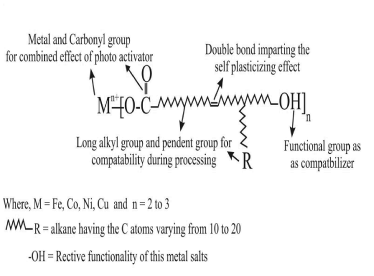 |
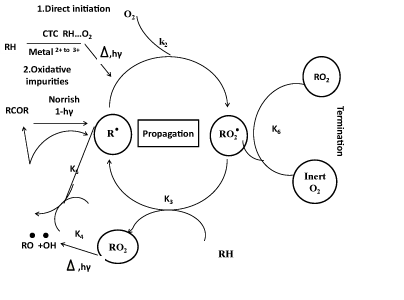 |
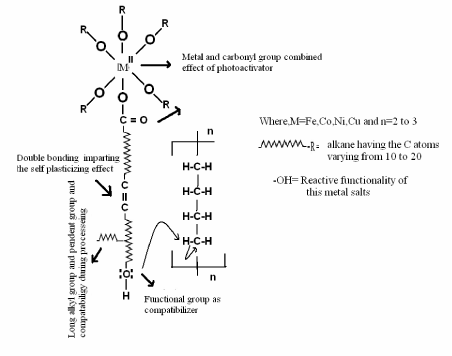 |
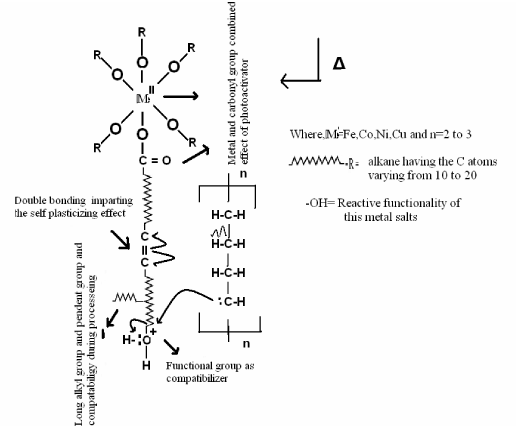 |
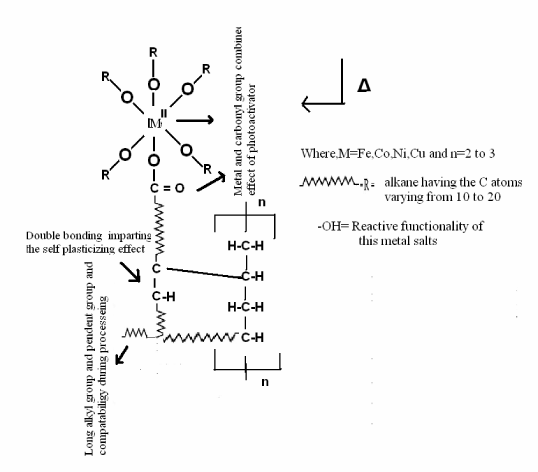 |
| Figure 1 | Figure 2 | Figure 3 | Figure 4 | Figure 5 |
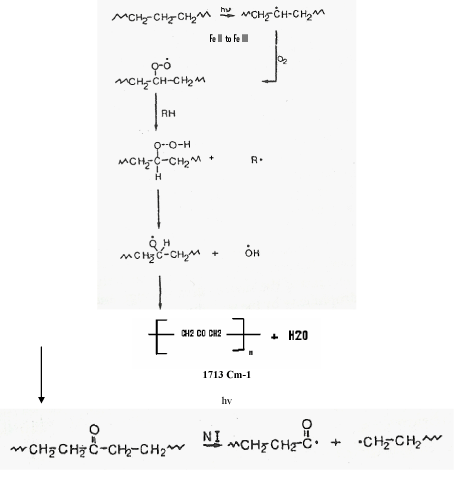 |
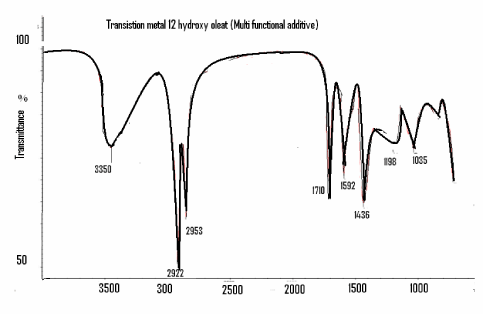 |
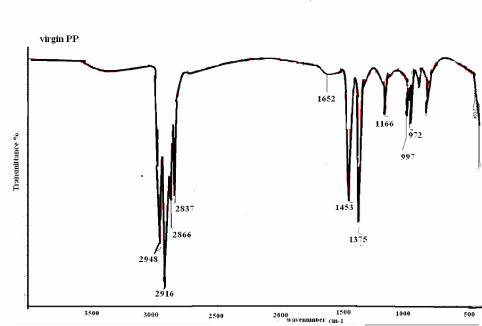 |
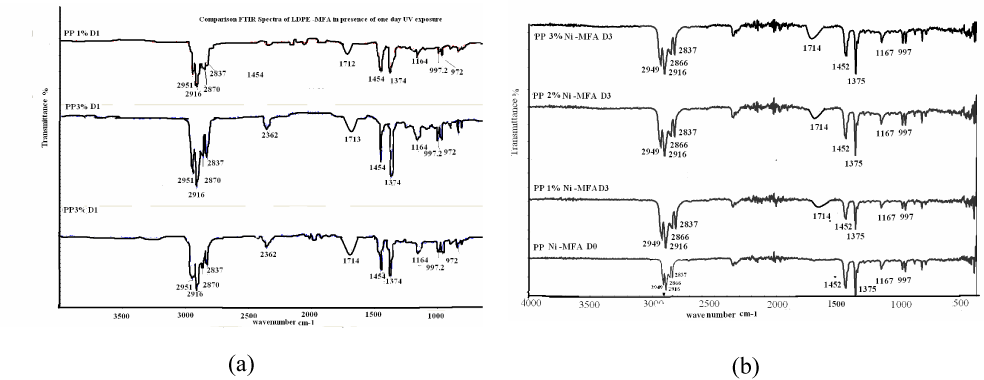 |
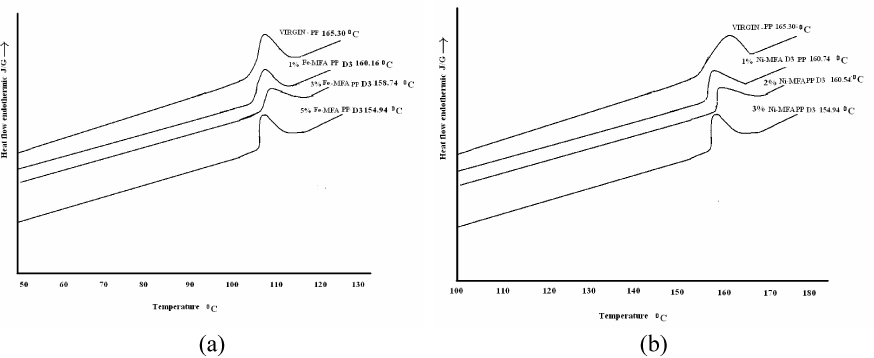 |
| Figure 6 | Figure 7 | Figure 8 | Figure 9 | Figure 10 |
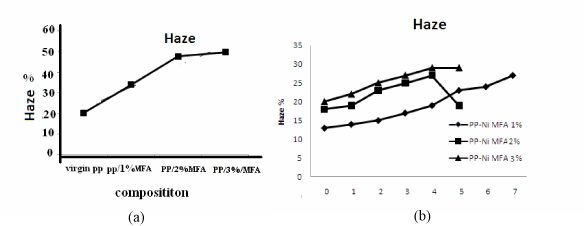 |
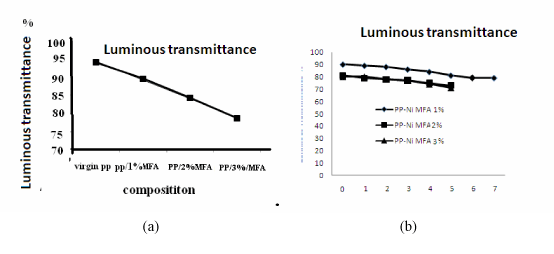 |
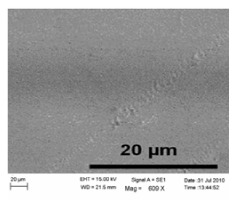 |
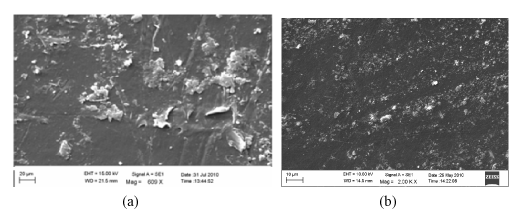 |
| Figure 11 | Figure 12 | Figure 13 | Figure 14 |
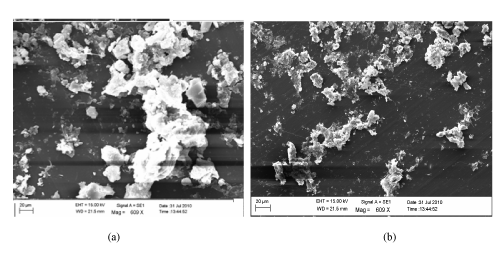 |
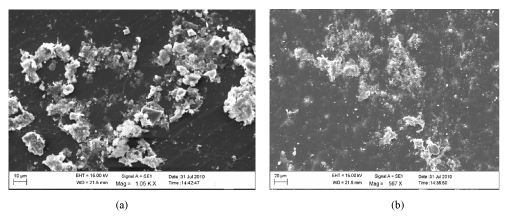 |
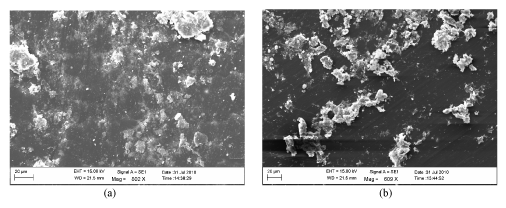 |
| Figure 15 | Figure 16 | Figure 17 |
Relevant Topics
- Anaerobic Biodegradation
- Biodegradable Balloons
- Biodegradable Confetti
- Biodegradable Diapers
- Biodegradable Plastics
- Biodegradable Sunscreen
- Biodegradation
- Bioremediation Bacteria
- Bioremediation Oil Spills
- Bioremediation Plants
- Bioremediation Products
- Ex Situ Bioremediation
- Heavy Metal Bioremediation
- In Situ Bioremediation
- Mycoremediation
- Non Biodegradable
- Phytoremediation
- Sewage Water Treatment
- Soil Bioremediation
- Types of Upwelling
- Waste Degredation
- Xenobiotics
Recommended Journals
Article Tools
Article Usage
- Total views: 15236
- [From(publication date):
November-2010 - Sep 23, 2025] - Breakdown by view type
- HTML page views : 10499
- PDF downloads : 4737
